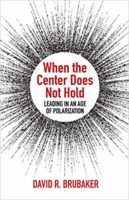In the life of every congregation, problems will eventually surface. Such challenges may involve disagreements and conflict, genuine harm, or more serious allegations of misconduct. Pairing the process with the problem requires discernment about the nature of the problem, as well as a suite of relevant processes. An effective response may also require the involvement of the local judicatory and/or outside mediation or consultation.
Following are three examples of possible challenges that a congregation might face, along with possible responses.
Conflict Resolution
Rev. Smith, who has served the Green Hills congregation for 15 years as senior minister, recently hired a younger associate minister to replace a beloved colleague. Within a year, tensions developed between the two, primarily over differing visions for the future of the congregation and contested understandings of the associate’s job description. Despite multiple attempts to talk through their differences, Rev. Smith and the associate remain at odds about how to work effectively together.
Green Hills is part of a larger judicatory, so the senior and associate minister consulted with the judicatory regarding how to proceed. They were encouraged to work with the chair of their Personnel Committee (or Staff Parish Relations Committee) to identify an experienced third-party mediator from outside the congregation to assist them in communication and role clarification.
The mediator that both parties accepted had experience with staff conflict in congregations and was particularly attentive to the power differential between a long-term senior minister and a newer associate minister. After initial pre-mediation meetings with each party and several joint sessions, the mediator drafted an agreement that both ministers signed, summarizing their commitments and plans to work together.
Restorative Processes
Avery and Taylor live in the same urban neighborhood and belong to a small group within the First Downtown congregation. Avery owns a small downtown business that sells “lightly used” clothing on consignment. The business has been very successful, and until recently Taylor had been one of the most consistent consignors of clothing at Avery’s shop.
Taylor’s loyalty ended when she became convinced that Avery was not offering a fair price for the clothing Taylor brought. Taylor blasted Avery’s business practices on social media, urging friends and family to boycott the shop. Avery experienced a noticeable drop in sales in the month following the posts.
Other participants in the small group were aware of the situation and noticed that both Avery and Taylor stopped coming to the biweekly small group meetings. Another member mentioned that the city had a “Conflict Mediation and Restorative Justice” Center, and wondered if such services could be helpful to Taylor and Avery. After checking with the staff at the Center, the group member encouraged both Avery and Taylor to contact them.
When Taylor spoke with the intake staff person at the Center, Taylor acknowledged over-reacting to Avery’s pricing policy and offered to remove the posts and apologize. The staff person also met separately with Avery, who wanted more explicit acknowledgement of the harm her business had suffered due to Taylor’s posts. When the two ultimately met in a restorative process, Taylor offered to post online and also to inform friends that she had misunderstood Avery’s policy and regretted spreading information that had damaged the reputation of Avery’s business.
Allegations of Misconduct
The most serious problem that a congregation can face is when allegations of sexual misconduct or abuse surface. In such situations, neither mediation nor restorative justice is the appropriate initial response. (Although restorative processes may be appropriate at a later point.) If minors are involved, Child Protective Services or a similar agency should be contacted. The regional association or national denomination will likely also have a process for responding to such allegations within the congregation. For example, the United Methodists of Greater New Jersey requires that allegations be immediately referred to the District Superintendent, so that the Sexual Misconduct Policy can be implemented.
How Do We Know What to Do?
There are two challenges facing congregational leaders when a problem arises. The first is discerning what kind of problem it is. The second is pairing it with the appropriate process. Here are three guidelines for addressing both challenges.
1. Listen carefully to both parties. Except for allegations of sexual misconduct or abuse, listen to both parties to discern whether a conflict resolution or restorative process might be appropriate. (Allegations of sexual misconduct or abuse require a formal investigation and mechanisms to protect potential future victims.) Mediation is particularly effective when both parties have a sense of agency and the issues in dispute can be clearly identified. Restorative processes are often indicated when genuine harm, including emotional harm, has occurred and when the one who did the harm is able to accept responsibility and to discuss appropriate remedies to repair the harm and the relationship. Both mediation and restorative processes require careful preparation and trained facilitators.
2. Consult with someone knowledgeable about processes. Many communities have mediation and/or restorative justice centers, as well as professional mediators and restorative practitioners. A conversation with a staff member or practitioner about how to proceed can be illuminating. While there is usually a fee for the actual services, receiving information about processes for transforming a conflict or repairing harm is generally free.
3. Identify the policies and processes available in your congregation, your community, and your association. Most of us never research policies and procedures until we need them—often in a time of crisis. The best time to explore what is available within your own congregation, your community, and your association is before a crisis. Review your congregation’s own policies, as some congregations have developed conflict and grievance policies and many now also have sexual misconduct policies. Likewise, it would be helpful to know the resources that are available in your local community and religious association.
Problems arise in every congregation. Discerning the difference among a conflict, a harm, or an allegation of misconduct—and responding with the appropriate process—requires both wisdom and knowledge. Wisdom regarding the problem, and knowledge regarding your options.
David Brubaker has consulted with organizations and congregations in the U.S. and a dozen other countries on organizational development and conflict transformation. He is the author of Promise and Peril, on managing change and conflict in congregations, and When the Center Does Not Hold, on leading in an age of polarization. David recently retired from his role as Dean of the School of Social Sciences and Professions at Eastern Mennonite University, and is now a Professor Emeritus of Organizational Studies.



